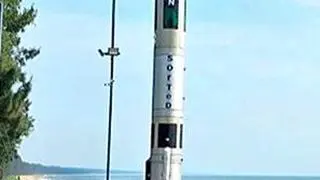Indian researchers have developed superhydrophobic coatings that can improve stainless steel’s corrosion resistance, making it usable in marine applications, pipelines, power generation, and nuclear sectors.
Superhydrophobic or ultralow wetting surfaces with self-cleaning properties have been intensely researched in recent decades due to their industrial relevance. When a drop of water is placed on a solid surface, it will spread on the surface based on the intermolecular interactions between the solid and the liquid. The wettability of a surface is measured by its water contact angle. Superhydrophobic surfaces have a water contact angle greater than 150 degrees and sliding angles less than 5 degrees. The conventional way of creating a superhydrophobic surface is by deposition of a polymer or sol-gel formulation in which nanoparticles are dispersed. This method enables a physical as well as chemical modification of the surface, to form superhydrophobic coatings in a single step. However, the coatings have shortcomings in durability, mechanical properties, and adhesion with the substrate.
Researchers at the International Advanced Research Centre for Powder Metallurgy and New Materials (ARCI) investigated the durability of their superhydrophobic coatings on SS 304 — the stainless steel used in marine devices, machinery, electronic parts, piping, power equipment and the nuclear sector, due to its excellent workability and cost-effectiveness.
The team explored shot blasting, a technique that improves the adhesion of coatings on a substrate surface, along with nanocomposite superhydrophobic sols for the generation of adherent and durable superhydrophobic surfaces on SS 304 substrates. With these surface modifications, the water contact angle increased from 84 to 160 degrees. The stability of the coatings was evaluated by the measurement of abrasion resistance, weather resistance, and corrosion resistance.
It was observed that the developed coatings were able to withstand 100 cycles of abrasion testing. These coatings also exhibited superior corrosion resistance, which can help overcome the problems encountered by SS 304 in harsh and contaminated environments such as marine and gas pipelines, including surface ageing and corrosion.








Comments
Comments have to be in English, and in full sentences. They cannot be abusive or personal. Please abide by our community guidelines for posting your comments.
We have migrated to a new commenting platform. If you are already a registered user of TheHindu Businessline and logged in, you may continue to engage with our articles. If you do not have an account please register and login to post comments. Users can access their older comments by logging into their accounts on Vuukle.